Uncovering Ghost Assets Costing Millions in Capital Waste
Executive Summary
Many infrastructure operators assume that what’s listed in their asset register actually exists. Pulse Infra knows better. Across energy, transport, utilities, and aviation, ‘ghost assets’—equipment that is missing, scrapped, inaccessible, or incorrectly classified— represent 10–20% of the reported asset base. These assets inflate capital budgets, skew maintenance costs, and degrade compliance reporting. This whitepaper sets out how Pulse Infra uncovers ghost assets and revalidates the physical-to-digital baseline using a structured, scalable methodology. For CFOs, COOs, and asset managers, this is not just a technical fix—it’s a financial imperative.
When Data Lies: The Ghost Asset Problem
Most asset-heavy organisations rely on legacy registers built from decades of system migrations, field adjustments, and assumption-based templates. The result? Assets that were never built, were decommissioned without updates, or remain incorrectly tagged in GIS, CMMS, or ERP systems. These ghost assets inflate asset bases, delay work orders, and lead to misdirected investment decisions. Pulse Infra has developed a forensic approach to recovering truth and restoring trust in asset data.
1. Common Failure Points in Asset Records
– Assets decommissioned in the field but not digitally closed
– Equipment replaced but tagged under old IDs
– Assets lost in CMMS migration with duplicated entries
– Misreported GPS/coordinate mismatches for large field inventories
– Digitised asset hierarchies with no physical verification
Pulse Infra investigations consistently reveal ghost asset rates of 8–20% in unmanaged registers.
2. Pulse Infra’s Approach to Asset Reality Checks
Our structured methodology includes:
1. **Data Integrity Profiling:** Identify high-risk data clusters based on age, hierarchy gaps, and field anomalies
2. **Geo-Spatial Sampling:** Combine satellite imagery, GIS, and field GPS validation for high-volume assessments
3. **Asset Walkdown Protocols:** Run field inspections to confirm physical presence, tag accuracy, and operational status
4. **Digital Reconciliation:** Cleanse and correct registers using version control and master data governance
5. **Capital Recovery Analysis:** Quantify capital exposure, insurance distortion, and maintenance savings potential
3. Case Results: Ghost Asset Recovery in Action
– In a national energy utility, Pulse Infra’s audit reduced listed asset count by 14%, triggering a $47M CAPEX reclassification and audit compliance gain.
– In a metropolitan transport network, 3,200 ‘phantom’ control units were removed from the asset base—cutting asset insurance premiums by 11%.
– In a global airport, walkdown inspections found 18% of airside lighting infrastructure to be either removed, mis-tagged, or non-operational—corrected in the EAMS within 6 weeks.
4. Why Ghost Asset Clean-up Pays for Itself
The financial upside of accurate asset registers includes:
– Reduced depreciation and audit exposure
– Tighter insurance and financial reporting alignment
– More accurate lifecycle costing and capital planning
– Faster work order response and failure investigation
Pulse Infra combines engineering, data science, and operational audit capability to deliver results that stand up to CFO, regulator, and board scrutiny.
Industry Views on Asset Truth
“A digital twin is only as useful as the data it reflects—and ghost assets corrupt the foundation.”
– Prof. David Henley, Author, The Infrastructure Illusion
“Ghost assets don’t just hurt maintenance—they distort value. Clean registers are the first step to credible capital strategy.”
– Jana Karim, Asset Risk Director, Public Utilities Europe
Conclusion: Truth Before Transformation
Pulse Infra offers clients more than data cleansing—it delivers operational clarity and financial recovery. Whether preparing for audit, refining capital strategy, or deploying digital twins, the first step is knowing what really exists. The ghost asset problem is real. Solving it is now a strategic advantage.
